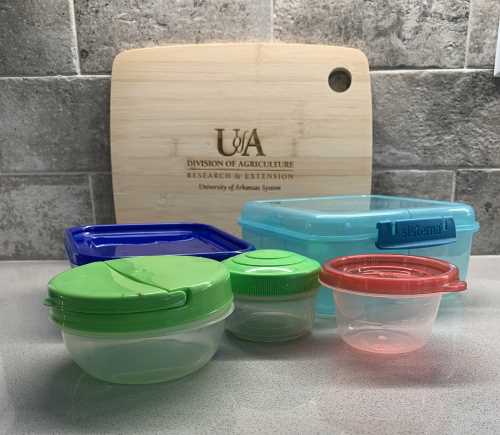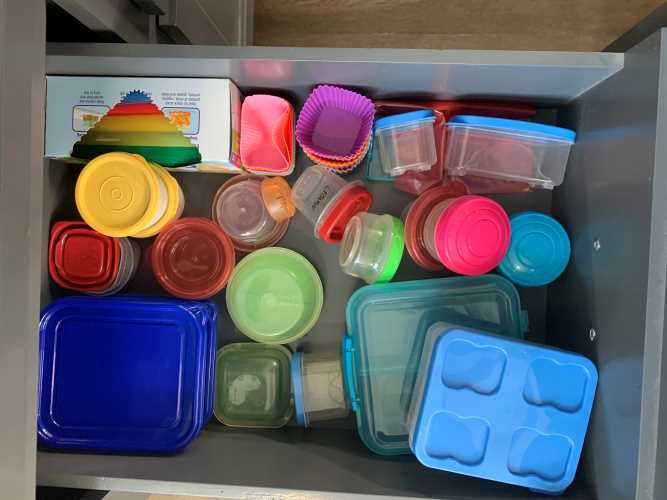How to Save Money on Lunches
At Home with UAEX
Learn from the best Extension Educators on being at home with UAEX!
How to Save Money on Lunches
by Katie Cullum

For kids –
Get your children involved in the process! They are more likely to eat what they helped pick out. Make a list of their favorite foods in the five food groups (protein, vegetables, fruits, grains, dairy) and make sure they pick something from each group.
For adults –
Cook large batches of soups and stews and freeze in lunch-size containers. I especially like to make a soup that the rest of my family may not like. This way, I have a soup that I really enjoy and I have plenty.
For everyone –

Save money by changing from disposable/one-time-use packaging to reusable packaging. This may require a bit of an investment up front, but it will pay off in the long run. Reusable lunch and drink containers help reduce food waste since leftovers can return home. They can also help with portion control. Choose containers that are dishwasher-safe for easy cleaning! Keep all of your lunch supplies in one place together to make mornings less stressful.
Drink water! Refill reusable bottles with water. Kids don’t really need juice for lunch but they do need water. They can usually buy milk at school or you can pack yogurt or cheese for their dairy.
Make leftovers into planned-overs. This is especially good for kids since they already know what they are getting. Pack leftovers into your reusable containers at the table, after dinner, and most of the work is done at night! Be creative – tonight’s roast can be tomorrow’s sandwich or taco salad.
Buy in bulk, instead of pre-packed foods. Sometimes saving money means sacrificing convenience. Cheese sticks are more expensive than buying a cheese “brick” (and then cutting it up). Filling a reusable water bottle is more economical than buying water bottles or juice boxes. It is easier to buy baby carrots instead of pound of whole carrots and then peeling and cutting them up. Individually-wrapped snacks are more expensive than say, packing your own pretzels into a reusable container. Yogurt is less expensive when buying a large container instead of individual ones. Plain yogurt is even better – just add a variety of fruits and honey to add flavor.
Consider more affordable proteins such as beans, peas, or eggs. Beans and peas may actually be easier for small children to eat because they can be easily picked up and chewed. Peanut butter is also a favorite of kids – and making a sandwich is a great skill for children to learn. Just make it at night if mornings are crazy and you won’t be tempted to reach for the frozen packaged sandwiches! You could even use hummus as a sandwich spread and add a variety of veggies.
Keep food safe – don’t waste it! Don’t forget to wash hands before preparing lunch. If you don’t have access to a refrigerator, use an insulated bag and reusable ice packs to keep food cold.
